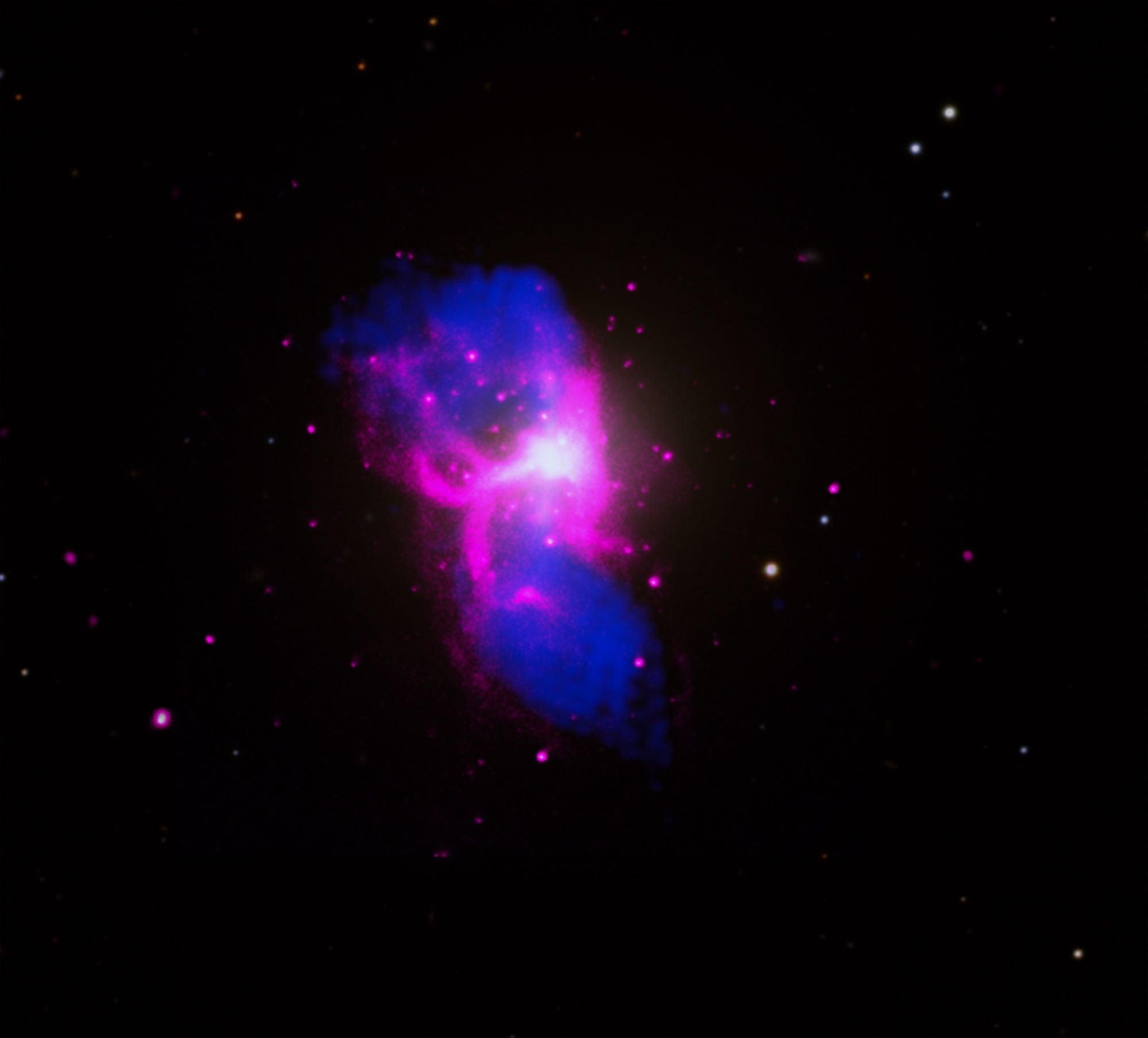
Recent Chandra observations of Messier 84 (M84) in the Virgo Cluster by Bambic et alare the deepest and most detailed to date and have revealed a remarkable “H”-shaped structure in the 107 – 108 K gas around the galaxy.
Active Galactic Nuclei (AGN) are galaxies in which the nucleus (or core) is more luminous (produces more radiation) than the rest of the galaxy. Heating of accreting gas onto a supermassive black hole at the centre of the galaxy is thought to be responsible for the radiation. The release of gravitational potential energy during accretion powers jets, which can both heat and carve out shapes in the surrounding gas and dust. However, the connection between the AGN and the accretion flows that power them remains an outstanding problem.
- M84 is a nearby giant elliptical galaxy and AGN. Accretion onto a supermassive black hole at the centre of the galaxy fuels two jets.
- M84 is one of 5 systems in which the Bondii radius (the distance at which material starts to fall
-
Pareidolia is when people see familiar shapes or patterns in random data. Pareidolia can occur in all kinds of data from clouds to rocks and even galaxies.
Active Galactic Nuclei (AGN) are galaxies in which the nucleus (or core) is more luminous (produces more radiation) than the rest of the galaxy. Heating of accreting gas onto a supermassive black hole at the centre of the galaxy is thought to be responsible for the radiation. The release of gravitational potential energy during accretion powers jets, which can both heat and carve out shapes in the surrounding gas and dust. However, the connection between the AGN and the accretion flows that power them remains an outstanding problem.
Astronomers, including the WCA’s Professor Brian McNamara, used 840 kiloseconds of data from NASA’s Chandra X-ray Observatory to study the origins of the accretion flow feeding the supermassive black hole in the centre of M84. They were able to look at gas on the scales of the X-ray halo all the way down to the Bondi radius (the distance at which material starts to fall onto the black hole accretion disk). They made a detailed new map of the hot gas (pink) in and around M84 down to only about 100 light-years away from the black hole in the center of the galaxy. This gas radiates at temperatures in the tens of millions of degrees. The radio image from the National Science Foundation’s Karl G. Jansky Very Large Array (VLA) in blue shows the jets streaking away from the black hole. Optical data from the Sloan Digital Sky Survey in white shows M84 and neighbouring galaxies.
McNamara and collaborators found that the hot gas appears to take the shape of a stylised letter “H”. In M84, the motion of the jets has acted to carve out holes, or cavities, in the hot gas surrounding the black hole. Given the orientation of the jets to Earth and the profile of the hot gas, the rims of the cavities form what appears to resemble the letter “H” in the image above. The huge letter “H” is about 40,000 light-years tall – about half the width of the Milky Way
Bambic et al tested a model called Bondi accretion, where all of the matter within a certain distance from a black hole -- effectively inside a sphere -- is close enough to be affected by a black hole’s gravity and start falling inwards. This effect is named after the scientist Hermann Bondi and “accretion” refers to matter falling toward the black hole. The new results show that Bondi accretion is not occurring in M84. Rather than matter falling inwards at the same rates in all directions, they found that the accretion flow was strongly influenced by the bipolar radio jets, despite the fact that the jets impact on only a relatively small fraction of the accreting gas. For example, matter is falling towards the black hole from the north - along the direction of the jet - at a rate that is only a quarter of that from directions where the jet isn’t pointing, to the east and west.
A paper describing these results appears in Monthly Notices of the Royal Astronomical Society and is available for download here. The study was led by Christopher Bambic, a graduate student at Princeton University. Other authors include Helen Russell (University of Nottingham, United Kingdom), Christopher Reynolds (Institute for Astronomy, Cambridge, UK), Andy Fabian (Institute for Astronomy), Brian McNamara (University of Waterloo, Canada), and Paul Nulsen (Center for Astrophysics | Harvard & Smithsonian).
This work is featured on the NASA website as part of their Black Hole Week.